You know those social media postings where a friend invites you to put up one favorite photo a day on some subject, without any label or caption? Just post a pretty picture. It’s harmless fun and you get to see some places and things you wouldn’t otherwise (all in the best possible taste, of course!). So. I’m on day three of a ten day run posting my favorite travel photos. And thinking about what I am posting
When I travel, I visit gardens and, surprise! I take photos of what I see and what inspires me along the lines of “to do at home later.” Looking through the photo files offered a chance to revisit these scenes and consider what, exactly, did I learn.
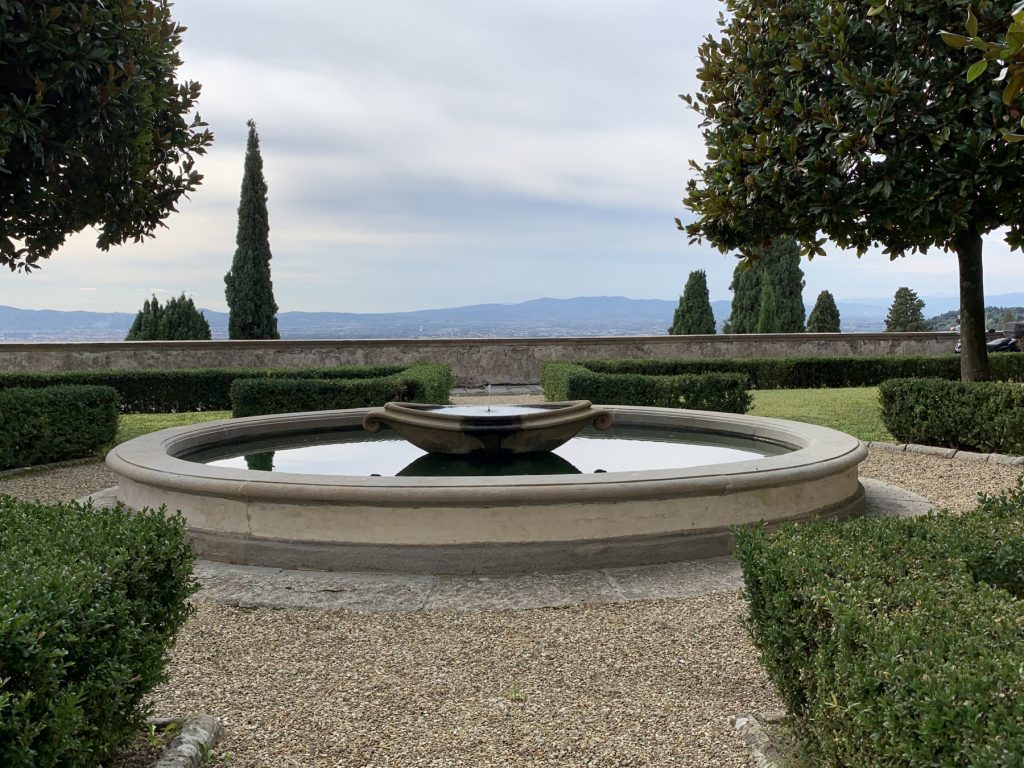
1 Villa Medici, Fiesole, Tuscany
A garden room with a view has long been the counsel of perfection for landscape design, advocated by Renaissance architects. This villa has been the prototype since it was built in the mid 16th century for the Medici family, designed in part by Giovanni Alberti along humanist principles of man in harmony with nature through science. Alberti advised that villas be situated on hillsides, where owners could take advantage of health-giving breezes and draw solace and inspiration from distant views. Villa Medici, built into a hillside in the village of Fiesole, is graced by this small secret garden tucked behind the villa. It’s an island of introspection-inducing calm and solitude, facing the awe-inspiring distant view of Florence. To exercise this principle in a modern settings, seek to create a quiet corner and, absent a view, make one: plant a tree or position a fountain or even a specimen tree or sculpture as the focal point to arrest your attention. Or borrow something from beyond your property line. I’m fortunate in having Pikes Peak as my distant view seen from a lawn chair parked beneath a peach tree. It ain’t Tuscany, but it’s home.
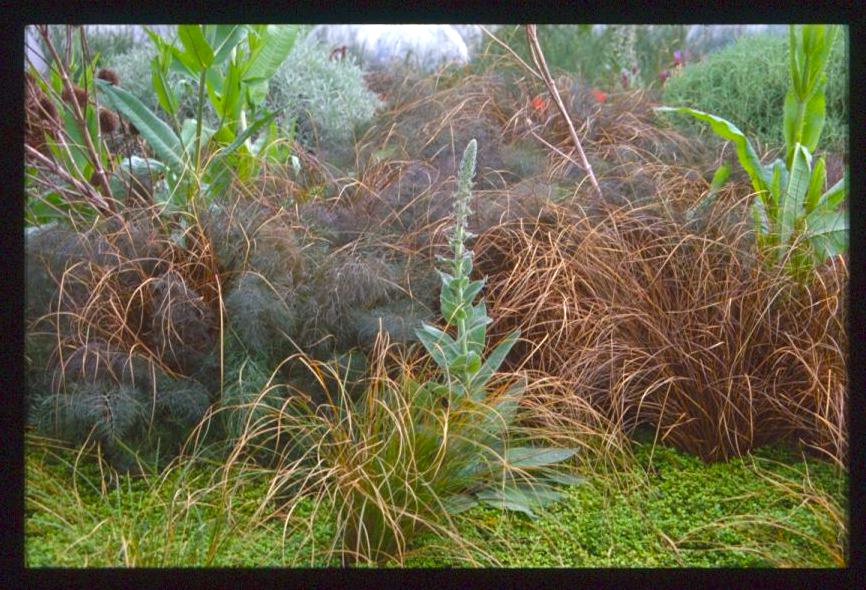
2 Mark Brown, Le Berquerie, Normandy, France
Color harmonies and form juxtapositions are what make a garden pop, as I learned from this gardener and expert plantsman, whose way of blending foliage shape, texture and color led me away from relying solely on flowers to populate my garden. After all, leaves and stems are around a great deal longer than blossoms. In the garden of his Normandy cottage, Mark tied together the froth of bronze-leaf fennel with copper lacings of carex, using grey felt verbascum leaves to anchor the whole. What flower color there is plays second fiddle to the foundational planting of leaf and stem, and creates a well-tempered symphony.
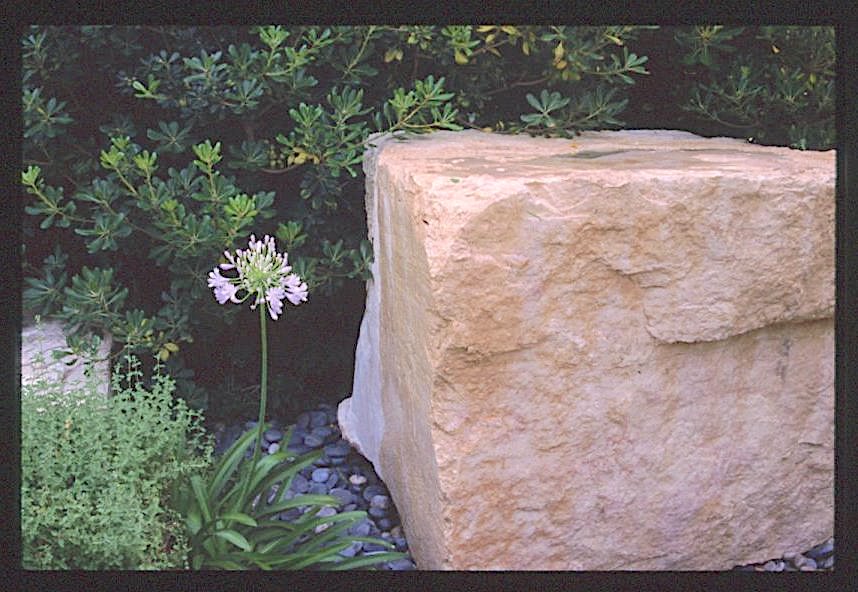
Rosa Finsley
Rock as structure and also as art is something you learn living in the Southwest, where many people have carpets of river rock rather than lawn, to conserve water. Unfortunately, a rock carpet is also a heat sink, which doesn’t help the environment. But then there are those, like Cedar Creek based landscaper Rosa Finsley who have a winning way with rock, as I learned at this San Antonio garden. Designed by Rosa and her team at the now shuttered Kings Creeks Gardens, rock walls and flagstone paths were obvious choices, but where a fountain was needed to mark the entrance, Rosa selected a huge block of limestone and had a hole drilled through the accommodate the fountain workings. She further set it over a reservoir, so the recycling water dripping into the well below, echoed as dripping water does at natural limestone pools in the Texas hill country. So the fountain moves from garden feature to sculpture by representing a natural feature of the region, and giving a cool welcome to a native garden.
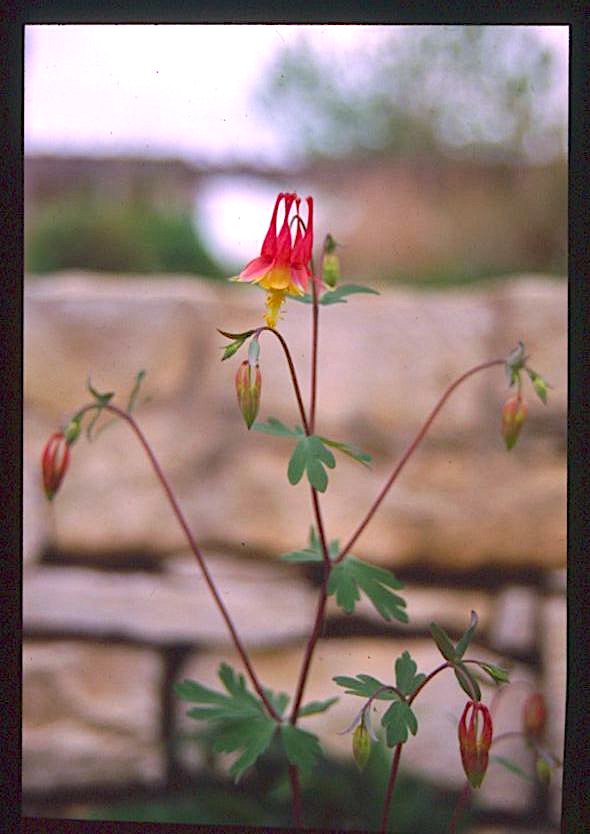
Ladybird Johnson Wildflower Center, Austin, TX
The perfection of native plants is not to be denied, once you’ve let go of any passion for collecting named varieties of exotic introductions. Moving to Texas from England I had a bad case of plant-nerditis, but working at the Ladybird Johnson Wildflower Center for a couple of seasons soon cured me. I was freed and able to appreciate the modest elegance of native flowers and the resilience of native trees and shrubs. And instead of planting in blocks of color, I now go for drifts of one, rejoicing as the singleton slowly colonizes and makes my garden one that suits the site–all without too much urging from the gardener.
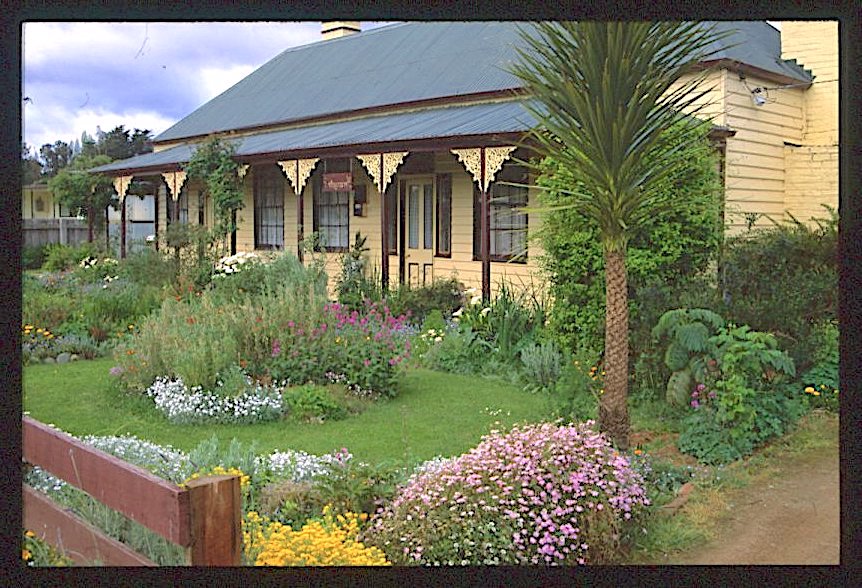
Tasmania
Garden as home and refuge was the message driven home to me by a visit to Tasmania in 1993 as a guest speaker for the Australian Garden History Society conference on cottage gardens. I’ve never travelled so far yet felt so at home. Founded by immigrants ripped from their native land, they struggled to get a foot hold in what must have seemed like another planet. They began carving small holdings out of quite alien landscape surrounding them, planting cottage gardens with familiar flowers and herbs (when available) to create comfort zones, thus shaping the land with their memories of home. In that way, even today, when we make a garden, it inevitably becomes that most personal of expressions—it’s home and it’s wherever the heart is.
©Ethne Clarke,2020, text and photos. I take full responsibility for the uneven quality of the illustrations, scanned from my old 35mm slides of the places I’ve been and things I’ve seen.










